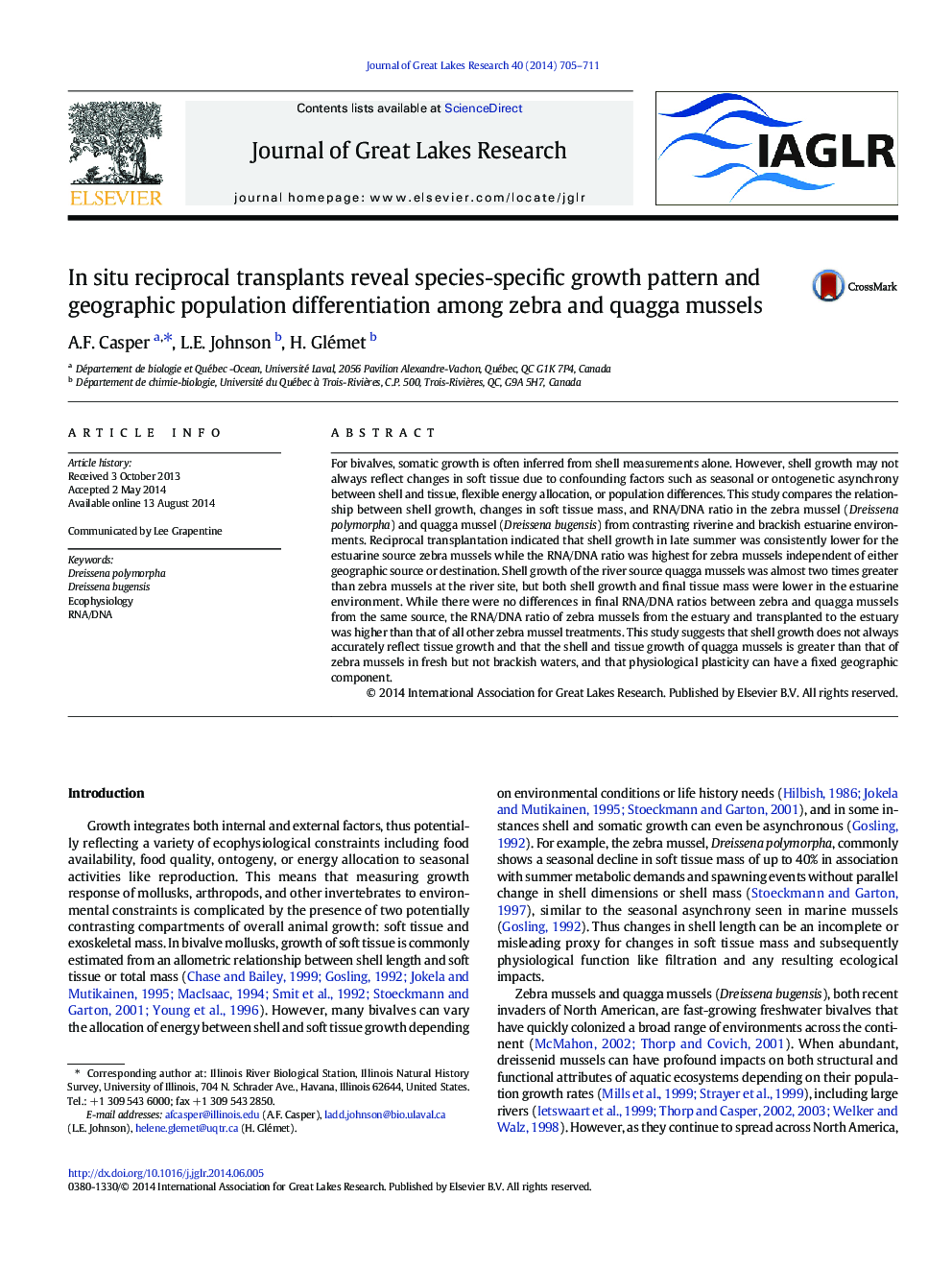| Article ID | Journal | Published Year | Pages | File Type |
|---|---|---|---|---|
| 6305313 | Journal of Great Lakes Research | 2014 | 7 Pages |
Abstract
For bivalves, somatic growth is often inferred from shell measurements alone. However, shell growth may not always reflect changes in soft tissue due to confounding factors such as seasonal or ontogenetic asynchrony between shell and tissue, flexible energy allocation, or population differences. This study compares the relationship between shell growth, changes in soft tissue mass, and RNA/DNA ratio in the zebra mussel (Dreissena polymorpha) and quagga mussel (Dreissena bugensis) from contrasting riverine and brackish estuarine environments. Reciprocal transplantation indicated that shell growth in late summer was consistently lower for the estuarine source zebra mussels while the RNA/DNA ratio was highest for zebra mussels independent of either geographic source or destination. Shell growth of the river source quagga mussels was almost two times greater than zebra mussels at the river site, but both shell growth and final tissue mass were lower in the estuarine environment. While there were no differences in final RNA/DNA ratios between zebra and quagga mussels from the same source, the RNA/DNA ratio of zebra mussels from the estuary and transplanted to the estuary was higher than that of all other zebra mussel treatments. This study suggests that shell growth does not always accurately reflect tissue growth and that the shell and tissue growth of quagga mussels is greater than that of zebra mussels in fresh but not brackish waters, and that physiological plasticity can have a fixed geographic component.
Related Topics
Physical Sciences and Engineering
Earth and Planetary Sciences
Earth and Planetary Sciences (General)
Authors
A.F. Casper, L.E. Johnson, H. Glémet,
